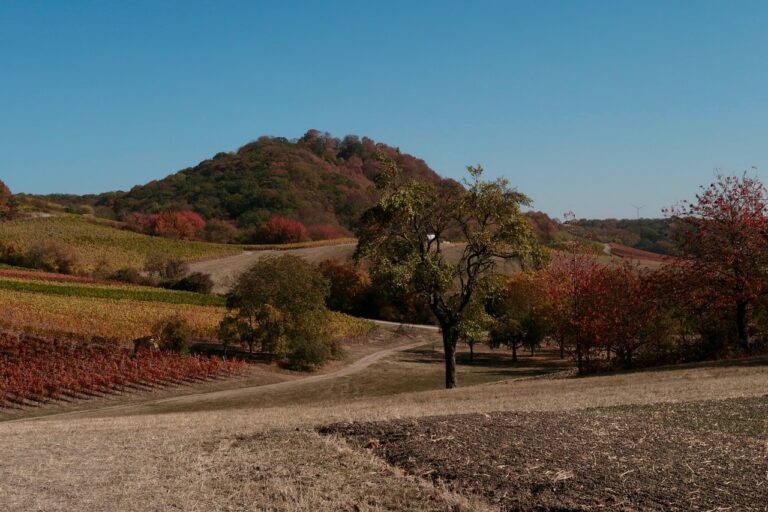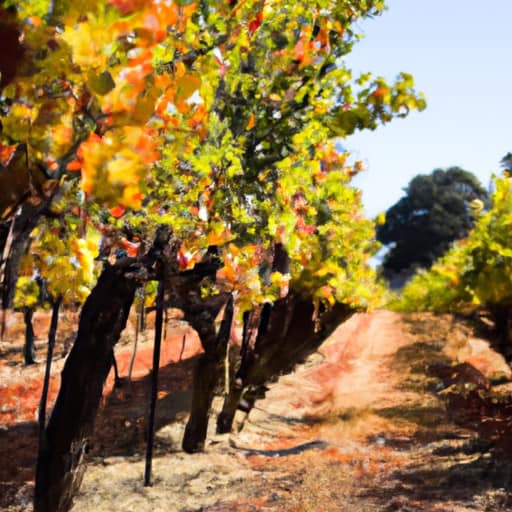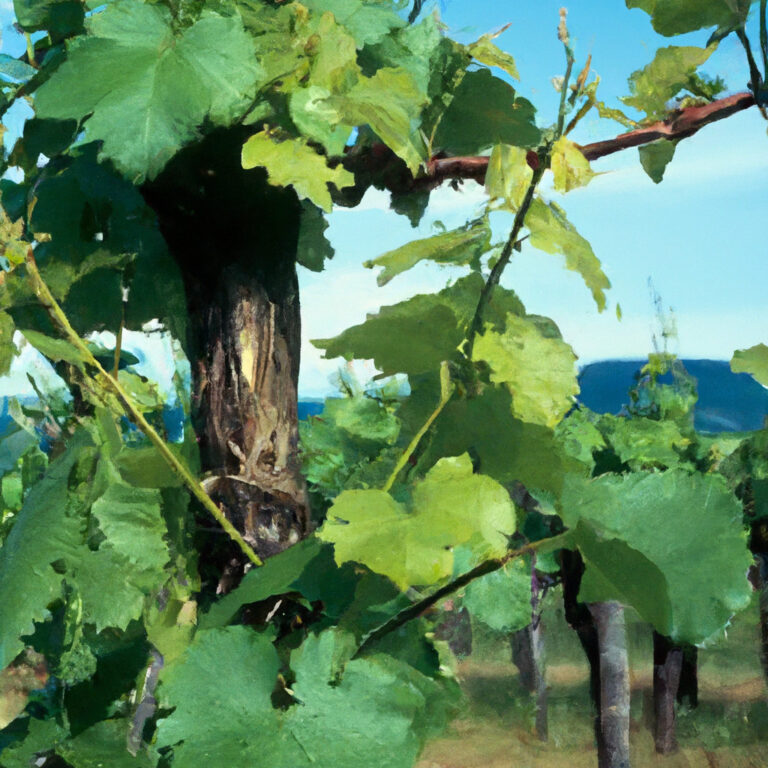Exploring the Chile Wine Regions
You’re in for a treat as we embark on an adventure to discover the fascinating Chile Wine Regions. Picture yourself surrounded by stunning landscapes, from the lush vineyards nestled amidst the Andes Mountains to the coastal valleys caressed by the Pacific Ocean breeze. As we delve into this journey, get ready to uncork the secrets of Chilean winemaking, savor exquisite wines infused with the unique characteristics of the land, and immerse yourself in the rich culture and history that make Chile a must-visit destination for wine enthusiasts. So, grab a glass, sit back, and explore the hidden treasures of Chile’s wine regions together.

Overview of Chile’s Wine Regions
Chile is renowned for its exceptional wine production, thanks to its diverse wine regions that contribute unique characteristics to its wines. Each region has its distinct climate, terroir, and grape varieties, resulting in a wide range of flavors and styles. From the Aconcagua Valley in the north to the Bio-Bio Valley in the south, Chile offers a stunning array of wine regions waiting to be explored and savored.
Historical influences on Chilean winemaking
Chile’s winemaking history dates back to the 16th century when Spanish conquistadors introduced vineyards. However, it wasn’t until the arrival of French winemakers in the 19th century that Chile began to elevate its winemaking techniques and produce world-class wines. The French influence brought with it knowledge of Bordeaux winemaking practices, such as oak barrels and blending techniques, which greatly enhanced the quality and complexity of Chilean wines. Chile continues to draw on this rich history and blend traditional methods with modern technology to produce exceptional wines.
Geographical location and its impact on wine production
Chile’s unique geographical location is crucial in shaping its wine production. Situated between the Andes Mountains to the east and the Pacific Ocean to the west, Chile benefits from a Mediterranean climate ideal for grape cultivation. The mountains protect from extreme weather conditions, ensuring a steady water supply from the melting snow caps. At the same time, the cool ocean breezes moderate the temperatures, allowing the grapes to ripen slowly and retain their acidity. Additionally, the fertile soils, rich in volcanic minerals, contribute to the complexity and depth of Chilean wines.
What are Chile Wine Regions?
The Aconcagua Valley
The climate and topography
Located just north of Santiago’s capital, the Aconcagua Valley is known for its exceptional red wines, particularly Cabernet Sauvignon. The valley’s Mediterranean climate is characterized by hot, dry summers and cool, wet winters. The high diurnal temperature variation provides the grapes with ideal conditions for ripening, resulting in concentrated flavors and balanced acidity. The topography of the Aconcagua Valley is diverse, with vineyards nestled between the Andes Mountains and the Coastal Range, each offering its own unique terroir and microclimates.
Famous vineyards and wines of Aconcagua Valley
The Aconcagua Valley has several prestigious vineyards that have gained international recognition for their exceptional wines. Errazuriz and Von Siebenthal are among the most renowned wineries in the region, producing exceptional Cabernet Sauvignon, Syrah, and Carmenere wines. Viña San Esteban and Viña Leyda are also worth a visit, offering a range of varietals, including Chardonnay and Pinot Noir. The wines from the Aconcagua Valley are known for their bold flavors, elegant structure, and remarkable aging potential.
The Casablanca Valley
Specialties of the Casablanca Valley
The Casablanca Valley is renowned for its cool-climate wines, particularly its white varietals. The valley’s proximity to the Pacific Ocean results in cool ocean breezes that create a long, slow-growing season for the grapes, allowing optimal flavor development and crisp acidity. Sauvignon Blanc and Chardonnay thrive in this climate, producing wines with vibrant fruit flavors, bright acidity, and mineral notes. The Casablanca Valley is also gaining recognition for its cool-climate Pinot Noir, which showcases delicate red fruit flavors and fine tannins.
Notable wineries in the Casablanca Valley
The Casablanca Valley is home to several prestigious wineries that have put this region on the map. Casas del Bosque stands out among them for its award-winning Sauvignon Blanc and Chardonnay wines. Kingston Family Vineyards is another notable producer specializing in cool-climate Pinot Noir and Syrah. Matetic Vineyards is known for its organic and biodynamic practices, creating exceptional wines that reflect the valley’s unique terroir. Visiting these wineries offers a chance to experience the cool-climate elegance of the Casablanca Valley’s wines.
The San Antonio Valley
Unique features of San Antonio Valley wines
The San Antonio Valley is one of Chile’s coolest wine regions, located just west of Santiago and close to the Pacific Ocean. This proximity to the ocean brings cool maritime breezes that influence the valley’s climate, resulting in wines with vibrant acidity and intense aromatics. The valley’s terroir, characterized by granite and clay soils, adds minerality and complexity to the wines. Pinot Noir and Sauvignon Blanc thrive in the San Antonio Valley, producing elegant and expressive wines that capture the region’s essence.
Wine tourism opportunities in the San Antonio Valley
The San Antonio Valley offers a unique wine tourism experience, allowing visitors to explore its boutique wineries and picturesque landscapes. Among the must-visit wineries in the area, Leyda and Matetic are known for their outstanding cool-climate wines and stunning vineyard views. The region’s proximity to the coastal town of Santo Domingo also offers opportunities to combine wine tasting with a relaxing beach getaway. Whether exploring the vineyards or enjoying a glass of wine overlooking the Pacific Ocean, the San Antonio Valley promises a memorable wine tourism experience.
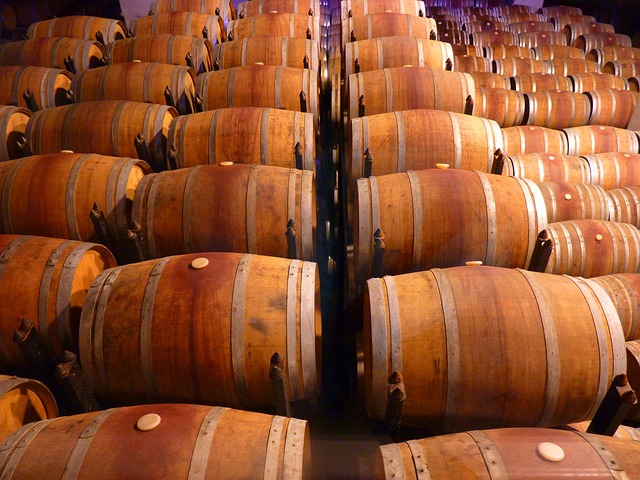
The Maipo Valley
The role of the Maipo Valley in Chilean wine production
As one of Chile’s oldest wine regions, the Maipo Valley has significantly developed the country’s wine industry. Located just south of Santiago, the Maipo Valley benefits from a Mediterranean climate and well-drained alluvial soils, making it ideal for grape cultivation. Cabernet Sauvignon thrives in this region, producing rich, full-bodied wines with ripe dark fruit flavors and structured tannins. The Maipo Valley is often called the “Bordeaux of South America” due to the similarities in its winemaking styles and the quality of its Cabernet Sauvignon.
Major wine types produced in the Maipo Valley
Beyond Cabernet Sauvignon, the Maipo Valley also produces exceptional Merlot, Carmenere, and Syrah wines. Viña Concha y Toro, one of Chile’s most prominent wineries, is located in the Maipo Valley and is famous for its iconic Cabernet Sauvignon, Casillero del Diablo. Another notable winery, Viña Santa Rita, showcases the region’s diversity with various varietals, including their renowned Medalla Real line of premium wines. Exploring the Maipo Valley allows wine enthusiasts to indulge in the classic elegance of Chilean wines.
The Central Valley
Impact of Central Valley’s microclimates on the diversity of its wines
The Central Valley is the heartland of Chilean winemaking, comprising several subregions known for their diverse microclimates. Spanning from the Maipo Valley in the north to the Maule Valley in the south, the Central Valley experiences a range of climates, from Mediterranean to cooler coastal influences. This diversity allows for cultivating a wide variety of grapes, including red and white varietals. The Central Valley’s wines are lauded for their approachability, fruit-forward flavors, and excellent value for money.
Prominent wineries worth visiting in the Central Valley
Numerous wineries are worth exploring in the Central Valley, each offering unique wine experiences. Undurraga and Santa Carolina are two historic wineries in the Maipo Valley that showcase the region’s tradition and produce exceptional Cabernet Sauvignon and Carmenere wines. In the Rapel Valley, Viña Montes stands out for its commitment to sustainable winemaking practices and renowned varietals such as Cabernet Sauvignon and Syrah. For a taste of the exciting emerging wine region, the Maule Valley, visit Gillmore Winery, known for its organic and biodynamic wines. Regardless of the subregion, wine enthusiasts will find an abundance of world-class wineries to explore in the Central Valley.
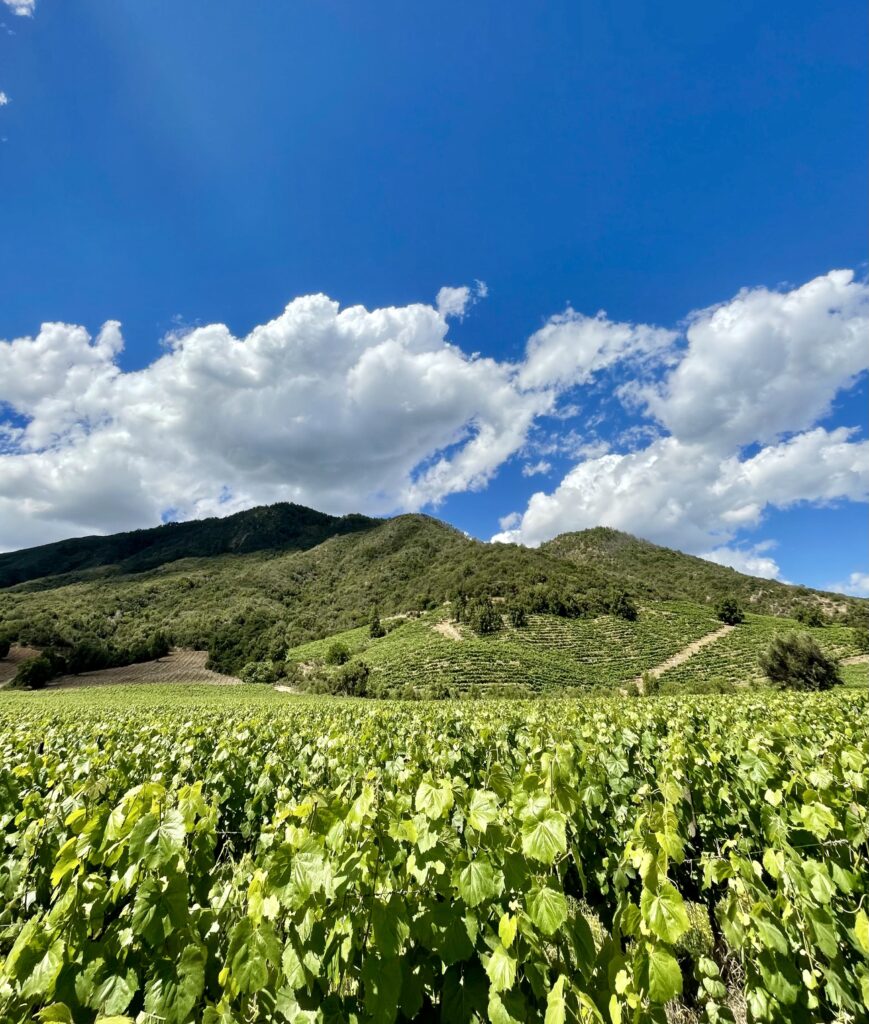
The Rapel Valley
Key wine types of the Rapel Valley
Located between the Maipo Valley and the Maule Valley, the Rapel Valley is known for its diverse wine offerings. Thanks to a variety of microclimates and soil types, the Rapel Valley can produce a wide range of grape varieties. The red wines from this region are particularly noteworthy, with Cabernet Sauvignon, Carmenere, and Syrah being some of the standout varietals. The wines from the Rapel Valley exhibit deep colors, ripe fruit flavors, and an enticing combination of power and elegance.
The influence of local indigenous cultures on the Rapel Valley’s wine production
The Rapel Valley has a rich cultural heritage, and the influence of the local indigenous Mapuche and Pehuenche communities can be seen in its wine production. These communities have a deep connection to the land and are known for their sustainable farming practices, which many wineries in the region are now embracing. Additionally, indigenous cultures bring a unique perspective to winemaking, often incorporating traditional techniques and local grape varieties into production. This blend of tradition and innovation has contributed to the Rapel Valley’s reputation as a dynamic and exciting wine region.
The Maule Valley
Historical importance of Maule Valley in Chilean winemaking
The Maule Valley holds a significant place in Chile’s winemaking history and is considered the birthplace of the country’s wine industry. It was in this region that Spanish conquerors planted the first grapevines in the 16th century. Over the centuries, the Maule Valley has continued to play a vital role in Chilean winemaking, producing a wide range of grape varieties and styles. The region’s warm Mediterranean climate and diverse soils make it suitable for growing red and white varietals, allowing winemakers to create unique and expressive wines.
Exploring the specific flavors and notes of Maule Valley wines
The wines of the Maule Valley are known for their bold flavors, rich textures, and excellent aging potential. Red varietals such as Carménère, Cabernet Sauvignon, and Syrah thrive in this region, producing wines with intense fruit flavors, well-integrated tannins, and a touch of spice. White varietals like Chardonnay and Sauvignon Blanc also excel in the Maule Valley, offering refreshing acidity and tropical fruit notes. The Maule Valley is a treasure trove for wine enthusiasts seeking exceptional wines with true Chilean character.
The Bio-Bio Valley
Unique conditions of the Bio-Bio Valley for winemaking
The Bio-Bio Valley is Chile’s southernmost wine region known for its cool climate, ideal for producing distinctive wines. The valley’s proximity to the Pacific Ocean results in cool maritime breezes, lower average temperatures, and a longer growing season. These unique conditions allow for the cultivation of grape varieties not commonly found in other parts of Chile. The wines from the Bio-Bio Valley showcase crisp acidity, bright fruit flavors, and intriguing floral and mineral notes.
The innovative and rare wines of the Bio-Bio Valley
The Bio-Bio Valley is a hotbed of innovation and experimentation in Chilean winemaking. The region is home to several small boutique wineries pushing the boundaries and crafting unique wines from lesser-known grape varieties. Some of the rare and exciting wines to discover in the Bio-Bio Valley include aromatic whites like Gewürztraminer and Riesling, as well as the intriguing Pais grape, which has been cultivated in Chile for centuries. Exploring the Bio-Bio Valley offers an opportunity to taste the innovative spirit of Chilean winemakers.
Interpreting Chilean Wine Labels
Common terminologies on Chilean wine labels
Understanding Chilean wine labels can help you confidently navigate the country’s rich wine offerings. Here are a few common terminologies you may come across:
Reserva: Indicates a wine that has been aged for a minimum period, offering more complexity and structure.
- Gran Reserva: Denotes a wine that has been aged for an extended period, typically indicating a higher quality wine.
Estate: Indicates that the wine has been produced from grapes grown exclusively on the winery’s estate vineyards, highlighting a focus on quality and terroir expression.
Single Vineyard: Points to a wine made from grapes sourced from a specific vineyard, showcasing the unique characteristics of that particular site.
Deciphering the vintage and varietal information
Chilean wine labels typically include information about the vintage and the grape variety used in the wine. The vintage refers to the year the grapes were harvested, which can greatly impact the wine’s flavor profile. Thanks to the country’s favorable climate, Chilean wines are known for their consistency, so even older vintages can offer great quality.
The varietal information on the label indicates the grape variety used to make the wine. Chile is known for its exceptional production of Cabernet Sauvignon, Carmenere, and Sauvignon Blanc, but you will also find other varietals such as Chardonnay, Merlot, and Syrah. Understanding the varietal information can help you choose wines that align with your personal preferences and explore new flavors and styles.
Conclusion
In conclusion, Chile’s wine regions offer a wealth of diversity, from the bold reds of the Aconcagua Valley to the cool-climate specialties of the Casablanca and San Antonio Valleys. The Central Valley showcases a wide variety of microclimates, and the Rapel, Maule, and Bio-Bio Valleys each contribute their unique flavors and styles to Chile’s wine landscape. Understanding the historical and geographical influences on Chilean winemaking, as well as the characteristics of each region, can enhance your appreciation and enjoyment of Chilean wines. So next time you pour yourself a glass of Chilean wine, take a moment to savor the flavors and raise a toast to the rich tapestry of Chile’s wine regions. Cheers!



